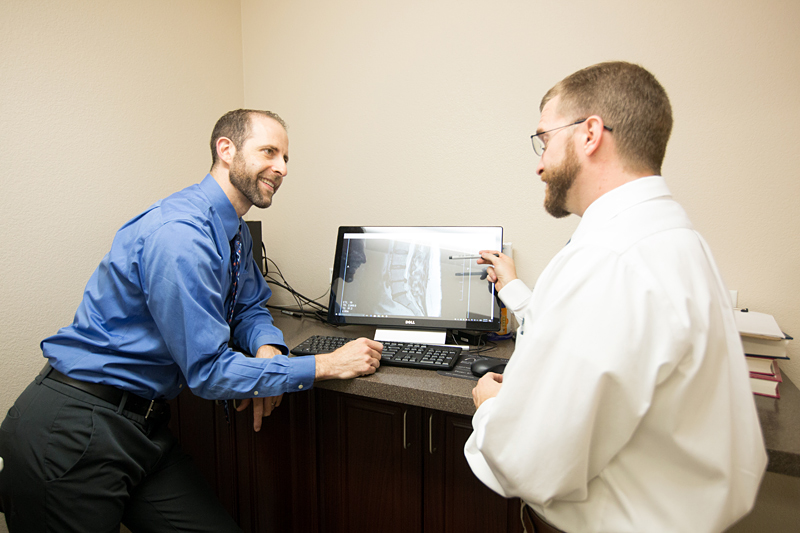Conditions
Arthritis and Osteoarthritis
The overwhelming most common type of arthritis is osteoarthritis. Osteoarthritis is most commonly known as “wear and tear” arthritis. Medically, osteoarthritis is known as degenerative joint disease. Pain involved with this type of arthritis arises when cartilage at the end of joint spaces wears away. Osteoarthritis is commonly thought of a as a typical side effect of getting older. Although age is a common factor, osteoarthritis is not always a direct end result of aging.
What Causes Osteoarthritis?
Osteoarthritis is caused by altered joint mechanics. When a joint is not aligned properly, it allows the joint surfaces to approximate, creating friction when the joint is put in motion. Over time, this friction wears down the cartilage that lubricates the joints.
As we age, the joints simply have more time to go through this wear and tear, which is why it is such a common condition in our older population. However, osteoarthritis is fickle and does not always affect all people as they age, or even affect them the same on every joint. For example some patients have osteoarthritis in just one knee even though both been bearing weight for the same amount of time. Genetics, activity, injury, and repetition of movement are all things that can be catalysts to osteoarthritis.
Symptoms of Arthritis
Common arthritis symptoms include swelling, pain, stiffness and decreased range of motion. Symptoms may come and go and range from mild to severe. Symptoms of arthritis may stay the same for years, or may progress and get worse over time. Severe arthritis can result in chronic pain, inability to do daily activities and make it difficult to walk or climb stairs. Arthritis can cause permanent joint changes. These changes may be visible, such as knobby finger joints, but often the damage can only be seen on X-ray.
Risk Factors for Arthritis
The primary risk factor for arthritis is constant repeated motion that causes altered mechanics of the joint. When looking at many common occupations, the repeated motion of forward reaching, computer work, and bad posture causes an imbalance that forces a person’s body to compensate. Terms such as “upper cross syndrome” and “Tech Neck” have arisen recently due to the epidemic of poor posture. We are seeing teenagers being diagnosed with osteoarthritis without a history of significant joint trauma due to sustained poor posture.
Being overweight is also a common risk factor leading to arthritis. Since none of us gain a few extra pounds perfectly symmetrically, the excess weight causes further stress on our weight bearing joints like knees and ankles.
Treatment Options for Arthritis
Sadly it’s not possible to reverse arthritis, just as you can’t reverse a cavity in your mouth. However you can leverage treatments for arthritis pain relief and help minimize the progression. At its earliest stages, osteoarthritis causes mild inflammation and joint stiffness. A healthy anti-inflammatory diet along with lifestyle changes such as yoga and exercise can relieve arthritis pain.
Chiropractic care has also proven effective at treating the main factor of osteoarthritis, altered joint mechanics. Additionally arthritis can be avoided altogether when a person makes their posture and range of motion important priorities. Patients who seek regular chiropractic care are much less likely to develop arthritis.
Chiropractic care for arthritis includes improving symmetry, decreasing muscle spasms, and improving joint range of motion, as well as laser therapy. These therapies will help halt arthritis when used correctly and consistently. At the early stage of arthritis, chiropractic care and exercises may result in arthritis pain relief. The further the arthritis has progressed, the less pain relieving results a patient is likely to experience. Early treatment is the best defense against arthritis.
Please note there are other forms of arthritis such as psoriatic and rheumatoid arthritis. To determine what kind of arthritis you may have, consult a professional.


